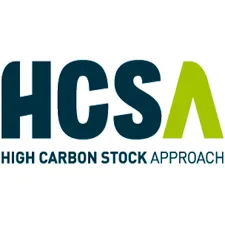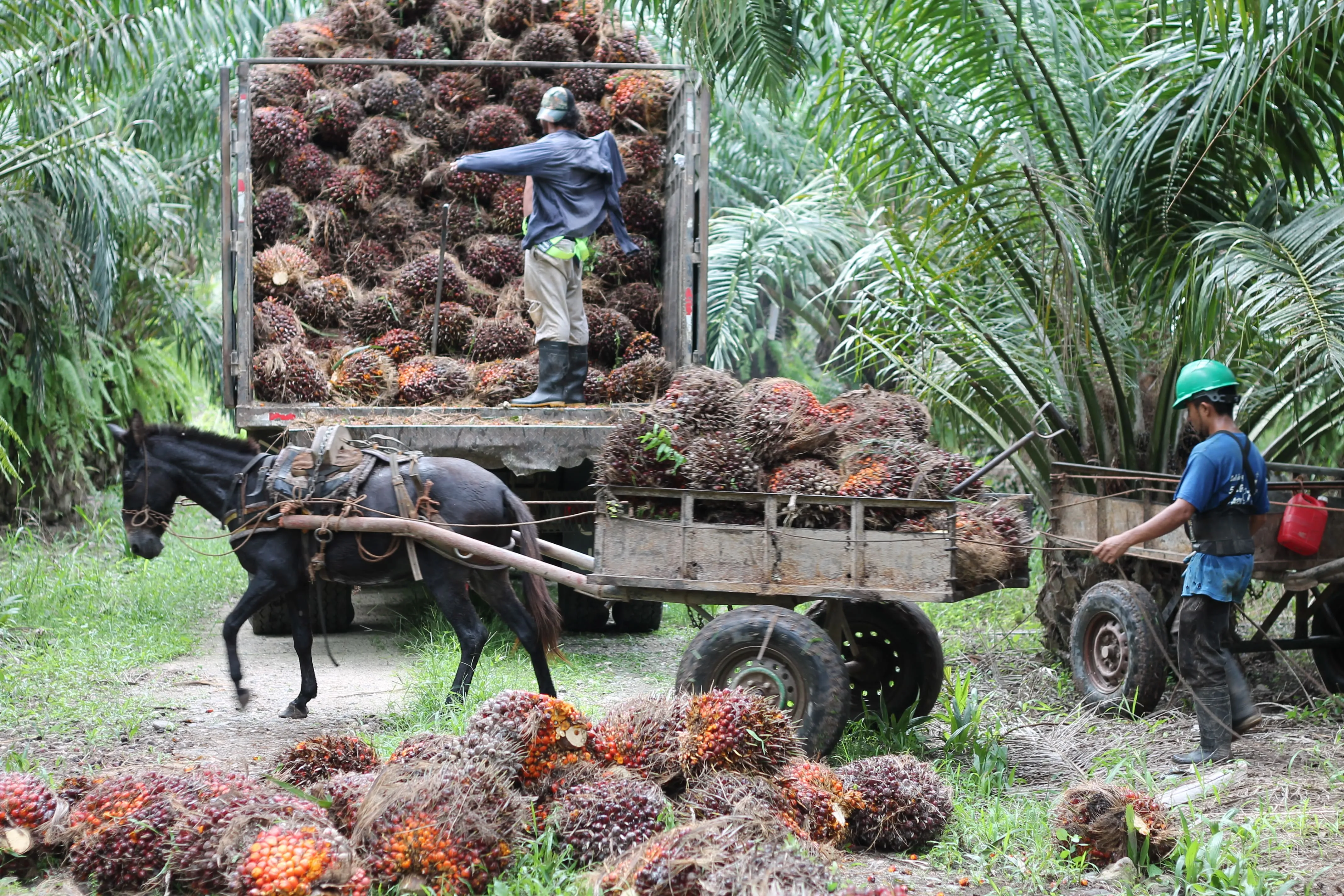
New Year, New Reporting Requirements: The ESRS
It’s 2024, and the European Sustainability Reporting Standards (ESRS) will now start to affect many businesses in Europe and beyond. Did you know there are ways that information on High Conservation Values - HCVs - could help businesses meet their reporting requirements?
New Year, New Reporting Requirements: The ESRS
What is the ESRS about? In short, it’s sustainability reporting
Last year the European Commission adopted the EuropeanSustainability Reporting Standards (ESRS) for use by all companies subject to the Corporate Sustainability Reporting Directive (CSRD), which compels companies to use standards in their sustainability reporting. The goal is to make corporate sustainability reporting more consistent, as happens with financial accounting and reporting.
The ESRS sets down what the standard is. It covers a range of environmental, social, and governance issues, including climate change, biodiversity and human rights. From 2025, any EU company falling under the CSRD* must file an annual report on how sustainability influences their business. Alongside cross cutting requirements and disclosure related to governance, strategy, management, metrics and targets, businesses will be disclosing material risks and opportunities, and the impact of their activities on people and the environment.
Double materiality: a new reckoning
Double materiality is a critical element built into the ESRS. It means both impact materiality and financial materiality must be assessed and reported. What makes something material? To establish impact materiality, positive and negative sustainability-related impacts that are connected with the undertaking’s business are assessed. To arrive at financial materiality, the financial effects of a combination of the likelihood of occurrence and the potential magnitude of risks and opportunities is calculated. Using robust information, businesses must assess both these areas in short, medium and long term scenarios.

Ambition to understand and address causality, impacts and dependencies
Double materiality is a clear move to awaken companies to their responsibility to cease unwanted impacts on people and nature. It also serves to make more apparent the causality between failure to do so and the adverse impacts on companies’ bottom lines which can affect the viability of their own business.
There’s high ambition in ESRS as it asks companies to demonstrate they are utilising well-researched qualitative and quantified evidence of their impacts and dependencies. including on the financial price tags of both. Businesses will need to look both up and down their value chains, including through products and services, and through business relationships, to gather this information.
So how can data on HCVs help?
The High Conservation Value approach focuses on current or potential future sites for commodity production which still harbour important values for nature and people. Once these values have been identified, they are managed in a manner that ensures they are not at risk from land use changes. For many commodities - like timber, pulp and paper, oil palm, sugar, cotton, rubber, cocoa and more - there is huge opportunity to secure amazing natural and social assets for the long term, through well-structured assessments of those values’ significance to our world, and of how we depend on them, from local to global implications.
With HCV Screening across landscapes, and through more detailed HCV Assessments at the site level, businesses can look ahead and plan for what needs to be maintained or enhanced, as well as build the social capital and knowledge about how best to achieve this protection. The HCV tools can help inform a business, at any stage, on their impacts as well as dependencies.
Species diversity, landscape level ecosystems and ecosystem mosaics, rare, threatened or endangered ecosystems or habitats, and related ecosystem services are covered by the HCV approachs, linking directly to areas the ESRS requires companies to strategize for, assess, and report on. Gaining a clear picture of these building blocks is invaluable to assessment.
HCV-related data can also help inform identification of production-related dependencies according to the site and its context. Easy examples are related to water, climate regulation effects and pollination. Operational dependencies in the form of social dependencies can be surfaced because stakeholders of all types are central when implementing HCV Approach, which includes following and documenting processes of Free Prior and Informed Consent with local communities and indigenous peoples.

Taking a moment to reflect on all this, the Natural Capital Coalition Protocol is useful in how it explains material dependencies on natural capital as when if consideration of its value, as part of the set of information used for decision making, has the potential to alter that decision.
We do need altered decisions to achieve sustainable business. The ESRS is asking for specifics: consideration of biodiversity and ecosystems in business strategy and business models; policies related to these; and actions being taken. This analysis needs to be supported with impact metrics. For many companies, HCVs can provide an easy-to-understand and easy-to-build-on framework for knowing what their risks and opportunities are, and for making decisions about how to manage their impacts better through HCV management and monitoring.
How we’d like HCVs and the HCV Approach to help ESRS reporting
We would like to see more businesses -
- using HCVs as a structured framework for understanding the most important building blocks of impacts and dependencies, and risks and opportunities, that they may have, and
- taking the information generated from using the HCV Approach as a starting point on their journey for transformative changes towards sustainability.
We’d also like to see companies utilising the HCV information they may already have access to more effectively. Companies may hold this directly, or gain access to it through their value chain relationships, and can use it to better effect in their analysis and leverage for ESRS reporting. With HCVs referenced in many global voluntary sustainability standards for commodities, and with some cases of nationwide assessments of the likelihood of presence of HCVs to inform land use planning, there is a wealth of information to draw upon. Actions to protect and enhance HCVs affected by business should be a key part of achieving any nature positive strategy.
We’d like to work in partnership with companies to get more specific on matching HCV information to the ESRS. Our shared aim is achieving the global sustainable development goals to build a greener, fairer, better world by 2030.
Contact us
If you would like to find out more about HCVs, the HCV Approach and related tools and deployments, and how it could help you with sustainability reporting, please take a look at www.hcvnetwork.org or email us at info@hcvnetwork.org.
-----------------------------------------------------------------------------------------------------------------------------------------------------------------------------
*Who does the ESRS affect?
The CSRD will apply to all companies with:
1. Over 250 employees
2. More than 40€ million in annual revenue
3. More than 20€ million in total assets
4. Publicly-listed equities and have more than 10 employees or 20€ million revenue
5. International and non-EU companies with more than 150€ million annual revenue within the EU and which have at least one subsidiary or branch in the EU exceeding certain thresholds
Any EU company that meets that criteria is required to file an annual report on how sustainability influences their business, as well as the company's impact on people and the environment. The ESRS outlines how and what information and ESG metrics companies need to report to European regulators to comply with the CSRD.
For a quick and easy to access summary, we suggest taking a look at KPMG’s talkbook.
Related Posts
Protegiendo el carácter ambiental y social único del sureste de México con el Enfoque de AVC
Hace dos años, HCVN y FEMEXPALMA firmaron un acuerdo de cooperación para promover prácticas sostenibles de producción de aceite de palma a través de la conservación, el desarrollo de capacidades y la divulgación. Hoy, el involucramiento de los pequeñosproductores se ha vuelto esencial en la protección de los Altos Valores de Conservación.
Read MoreProtecting southeastern Mexico’s unique environmental and social character using the HCV Approach
Two years ago, HCVN and FEMEXPALMA signed a cooperation agreement to promote sustainable practices in palm oil production through conservation, capacity building, and outreach. Today, the contributions of small-scale producers have become essential in the protection of High Conservation Values.
Read MoreDébloquer des incitations pour des solutions fondées sur la nature avec les communautés forestières
L'outil Forest Integrity Assessment (FIA) est une approche de liste de contrôle simple et conviviale conçue pour permettre aux gestionnaires de terres et à d'autres non-biologistes d'effectuer des estimations rapides et efficaces de l'état de la biodiversité forestière.
Read MoreOur Partnerships
Alongside many global initiatives, our work with partners promotes practices that help meet the global Sustainable Development Goalsand build a greener, fairer, better world by 2030.


Femexpalma
In April 2022, FEMEXPALMA and the HCV Network signed a 5-year cooperation agreement to promote sustainable production of palm oil in Mexico. FEMEXPALMA is a Mexican independent entity that represents palm production at the national level and promotes the increase of productivity in a sustainable way.
With global markets becoming stricter, for Mexican producers to be able to export to key markets such as the European Union, they must meet strict requirements such as certification by the Roundtable on Sustainable Palm Oil (RSPO). To be certified by RSPO, the HCV Approach must be applied prior to the establishment of any new oil palm plantations. With this cooperation agreement, the HCV Network will support FEMEXPALMA’s members and allies to design better strategies to identify, manage and monitor High Conservation Values and support smallholders to achieve RSPO certification and implement good agricultural practices.


High Carbon Stock Approach
The High Carbon Stock Approach (HCSA) is an integrated conservation land use planning tool to distinguish forest areas in the humid tropics for conservation, while ensuring local peoples’ rights and livelihoods are respected.
In September 2020, HCV Network and the HCSA Steering Group signed a five-year Memorandum of Understanding (MoU) to strengthen their collaboration to conserve forests and uphold community rights in tropical forests. The HCS and HCV Approaches are cornerstones of corporate no deforestation and conservation commitments, and increasingly for actors working at different scales. The collaboration aims to further support effective implementation of these commitments through increased uptake of the HCV and HCS tools.
Through this MoU, HCSA and HCVRN are pursuing two main strategic goals:
- Strive to promote the application of the two approaches in tropical moist forest landscapes and explore further opportunities for collaboration.
- Ensure that, where the two approaches are applied together, this happens in a coordinated, robust, credible, and efficient manner, so that HCS forests and HCVs are conserved, and local peoples’ rights are respected.


World Benchmarking Alliance
From May 2022, the HCV Network is an ally at the World Benchmarking Alliance (WBA). WBA is building a diverse and inclusive movement of global actors committed to using benchmarks to incentivise, measure, and monitor corporate performance on the SDGs, and will assess and rank the performance of 2,000 of the world’s most influential companies against seven systems of transformation by 2023.
The scope of WBA’s circular transformation was expanded to cover nature and biodiversity as recognition of the need for greater understanding, transparency and accountability of business impact on our environment. The WBA Nature Benchmark was launched in April 2022, which will be used to rank keystone companies on their efforts to protect our environment and its biodiversity. As HCV Areas are recognised as key areas important for biodiversity, companies that publicly disclose their actions to identify and protect HCVs will contribute to the assessment of their performance against the benchmark.


Taskforce on Nature-related Financial Disclosures - TNFD
The Taskforce on Nature-related Financial Disclosures (TNFD) is a global, market-led initiative, established with the mission to develop and deliver a risk management and disclosure framework for organizations to report and act on evolving nature-related risks, with the aim of supporting a shift in global financial flows away from nature-negative outcomes and toward nature-positive outcomes.
In April 2022, the HCV Network joined the TNFD Forum. The TNFD Forum, composed of over 400 members, is a world-wide and multi-disciplinary consultative network of institutional supporters who share the vision and mission of the task force.
By participating in the Forum, the HCV Network contributes to the work and mission of the taskforce and help co-create the TNFD Framework which aims to provide recommendations and advice on nature-related risks and opportunities relevant to a wide range of market participants, including investors, analysts, corporate executives and boards, regulators, stock exchanges and accounting firms.


Aquaculture Stewardship Council
The Aquaculture Stewardship Council (ASC) is the world’s leading certification scheme for farmed seafood – known as aquaculture – and the ASC label only appears on food from farms that have been independently assessed and certified as being environmentally and socially responsible. In 2021, the HCV Network and ASC formalised their collaboration through a Memorandum of Understanding (MoU). The MoU represents the first step in a fruitful relationship aimed at conserving HCVs in aquaculture. Although, existing guidance on the use of the HCV Approach currently focuses mainly on forestry and agriculture, the HCV Approach is however generic, and in principle also applicable to aquatic production systems. Through this MoU, this is recognised by the Aquaculture Stewardship Council (ASC) in their ASC farm standard, in which the protection of HCV areas is mentioned in the context of expansion


Accountability Framework Initiative
The Accountability Framework initiative (AFi) is a collaborative effort to build and scale up ethical supply chains for agricultural and forestry products. Led by a diverse global coalition of environmental and human rights organizations, the AFi works to create a “new normal” where commodity production and trade are fully protective of natural ecosystems and human rights. To pursue this goal, the coalition supports companies and other stakeholders in setting strong supply chain goals, taking effective action, and tracking progress to create clear accountability and incentivize rapid improvement. In July 2022, the HCV Network joined AFi as a Supporting Partner. AFi Supporting Partners extend the reach and positive impact of the AFi by promoting use of the Accountability Framework by companies, industry groups, financial institutions, governments, and other sustainability initiatives, both globally and in commodity-producing countries.


Biodiversity Credit Alliance
The Biodiversity Credit Alliance (BCA) is a global multi-disciplinary advisory group formed in late 2022. Its mission is to bring clarity and guidance on the formulation of a credible and scalable biodiversity credit market under global biodiversity credit principles. Under these principles, the BCA seeks to mobilize financial flows towards biodiversity custodians while recognising local knowledge and contexts.
The HCVN joined the BCA Forum in August 2023 to learn more from the many organizations already coming together to find effective pathways to opening up credit-based approaches, and how to contribute our knowledge and experience of years of working in a practical way, often with global sustainability standards and their certified producers, to protect what matters most to nature and people.
.webp)
.webp)
Nature Positive Forum
The Nature Positive Initiative is a group of stakeholders coming together to find ways to unlock success and achieve Nature Positive - a global societal goal defined as ‘halt and reverse nature loss by 2030 on a 2020 baseline, and achieve full recovery by 2050’, in line with the mission of the Kunming-Montreal Global Biodiversity Framework.
Core work includes preserving the integrity of ‘Nature Positive’ as a measurable 2030 global goal for nature for business, government, and other stakeholders, and providing the tools and guidance necessary to allow all to contribute. The initiative also advocates for the full implementation of the Kunming-Montreal Global Biodiversity Framework by governments and other stakeholders.


IUCN
IUCN is a membership Union uniquely composed of both government and civil society organisations. It provides public, private, and non-governmental organisations with the knowledge and tools that enable human progress, economic development, and nature conservation to take place together.
Created in 1948, IUCN is now the world’s largest and most diverse environmental network, harnessing the knowledge, resources and reach of more than 1,400 Member organisations and around 15,000 experts. It is a leading provider of conservation data, assessments, and analysis. Its broad membership enables IUCN to fill the role of incubator and trusted repository of best practices, tools, and international standards.
IUCN provides a neutral space in which diverse stakeholders including governments, NGOs, scientists, businesses, local communities, indigenous peoples’ organisations, and others can work together to forge and implement solutions to environmental challenges and achieve sustainable development.
Working with many partners and supporters, IUCN implements a large and diverse portfolio of conservation projects worldwide. Combining the latest science with the traditional knowledge of local communities, these projects work to reverse habitat loss, restore ecosystems, and improve people’s well-being.

Get Involved
Our Mission as a network is to provide practical tools to conserve nature and benefit people, linking local actions with global sustainability targets.
We welcome the participation of organisations that share our vision and mission to protect and enhance High ConservationValues and the vital services they provide for people and nature. By collaborating with the Network, your organisation can contribute to safeguarding HCVs while gaining valuable insights and connections that support your sustainability goals.
We are seeking collaborative partners to help expand and enhance our work, as well as talented professionals who can join the growing Secretariat team, and for professionals who can contribute to the credible identification of High Conservation Values globally.
Join us in securing the world’s HCVs and shaping a sustainable future.


